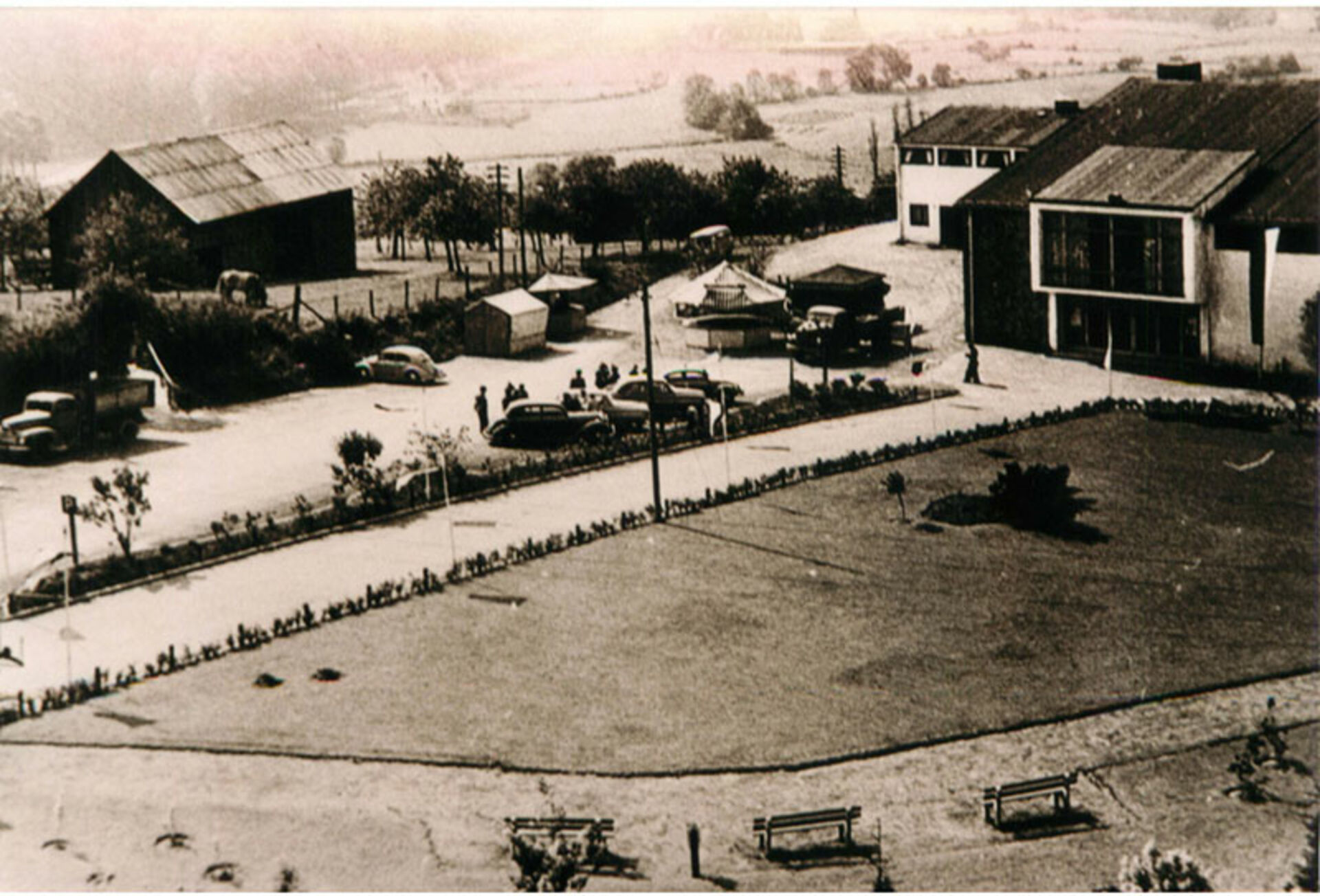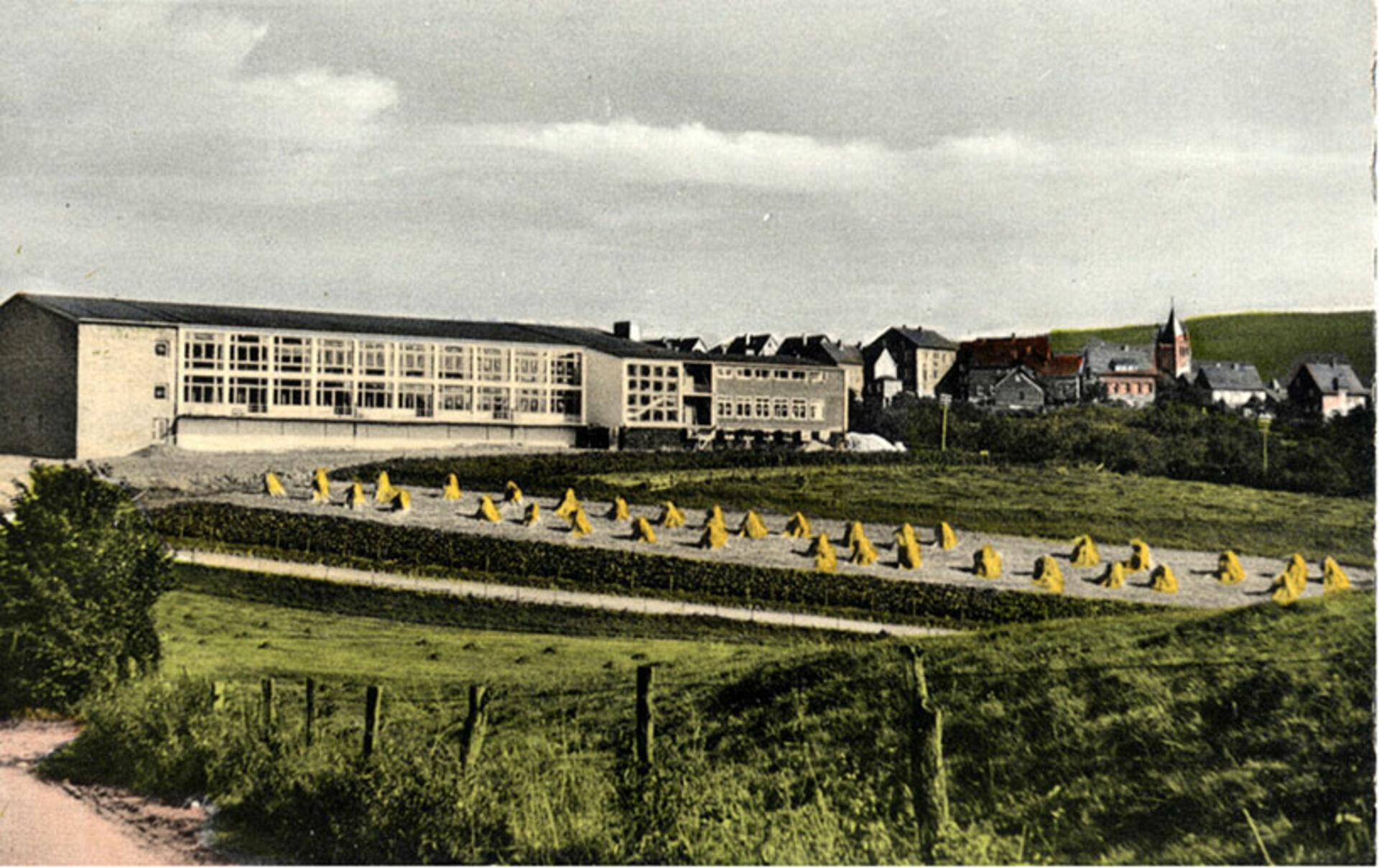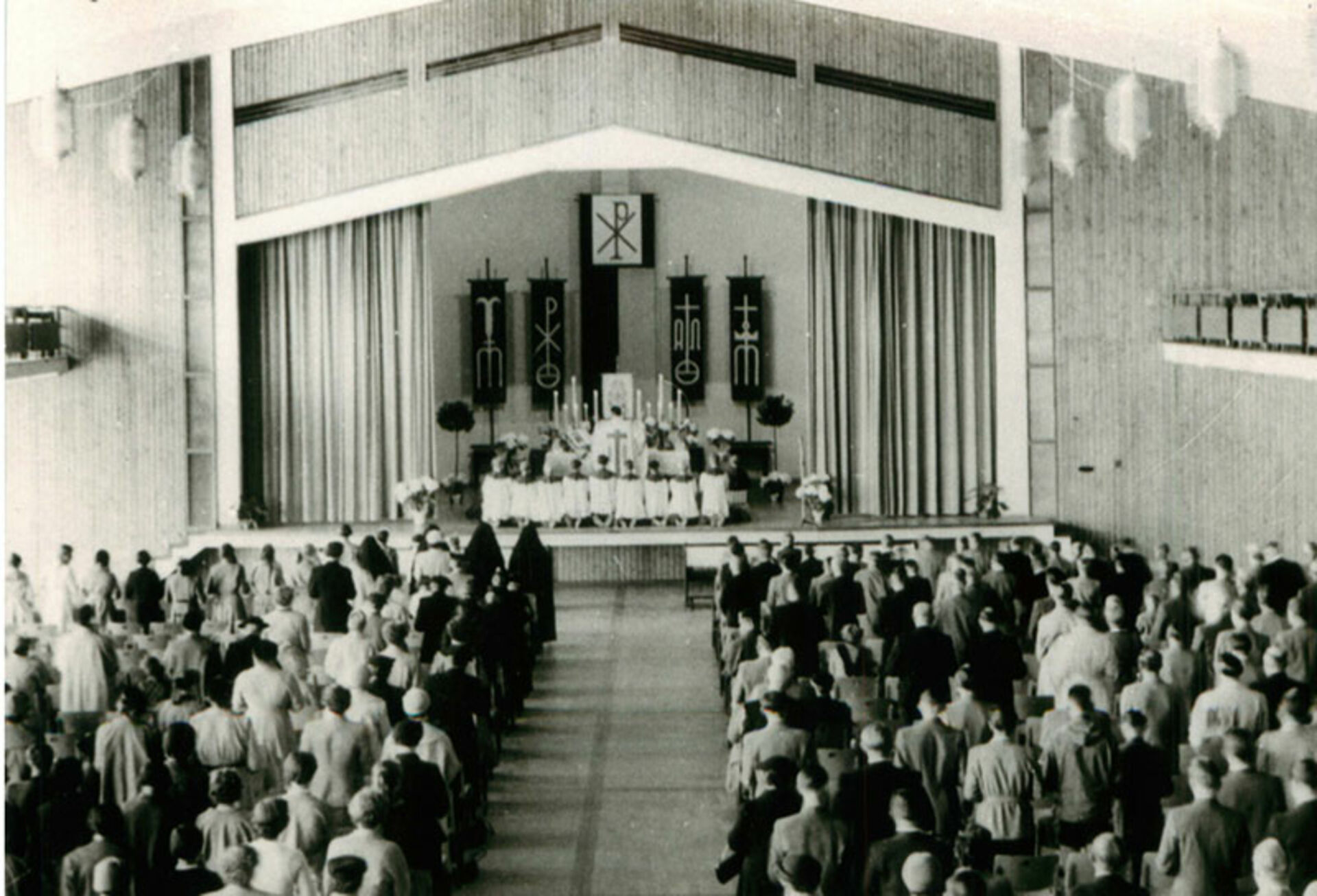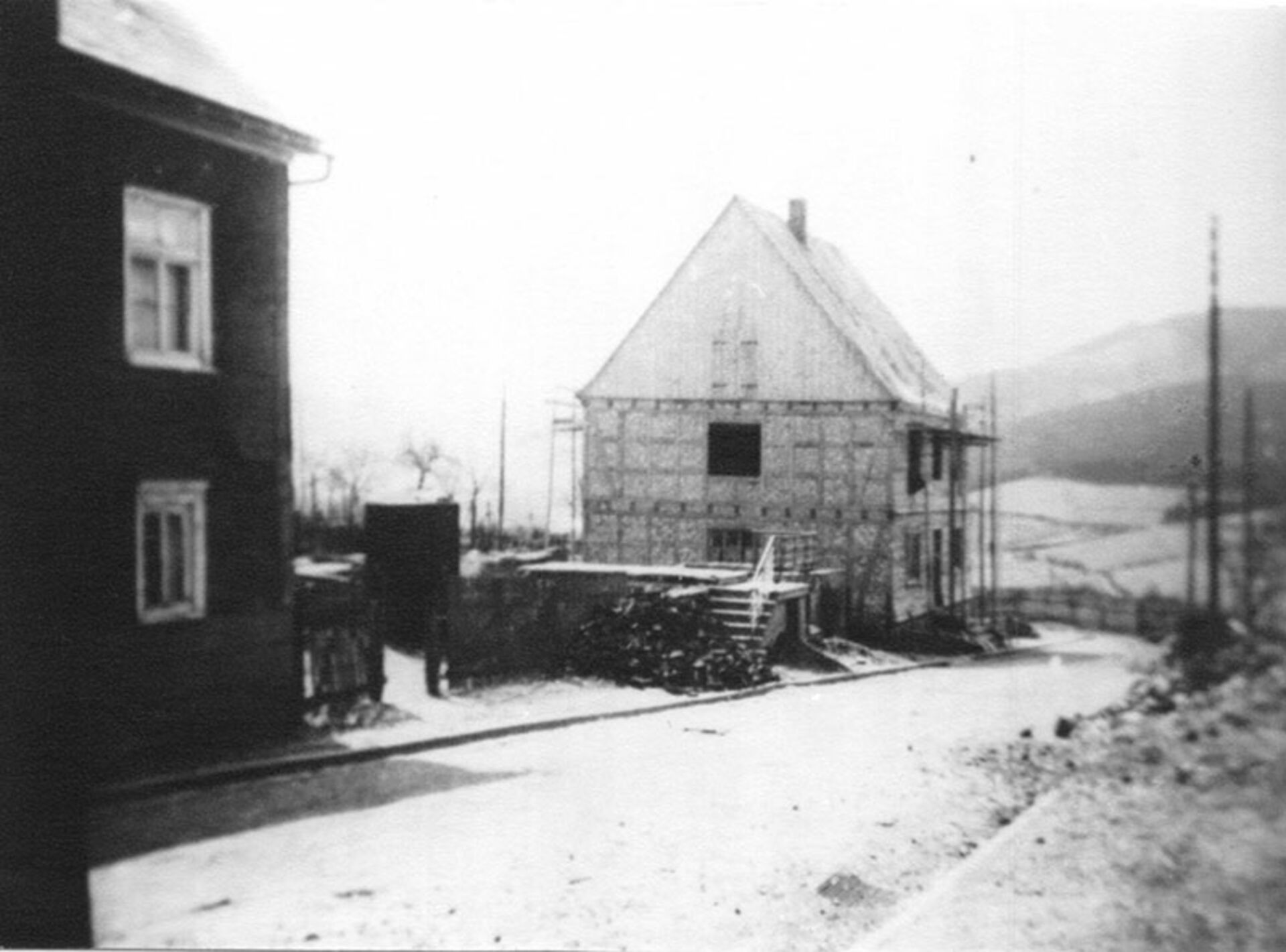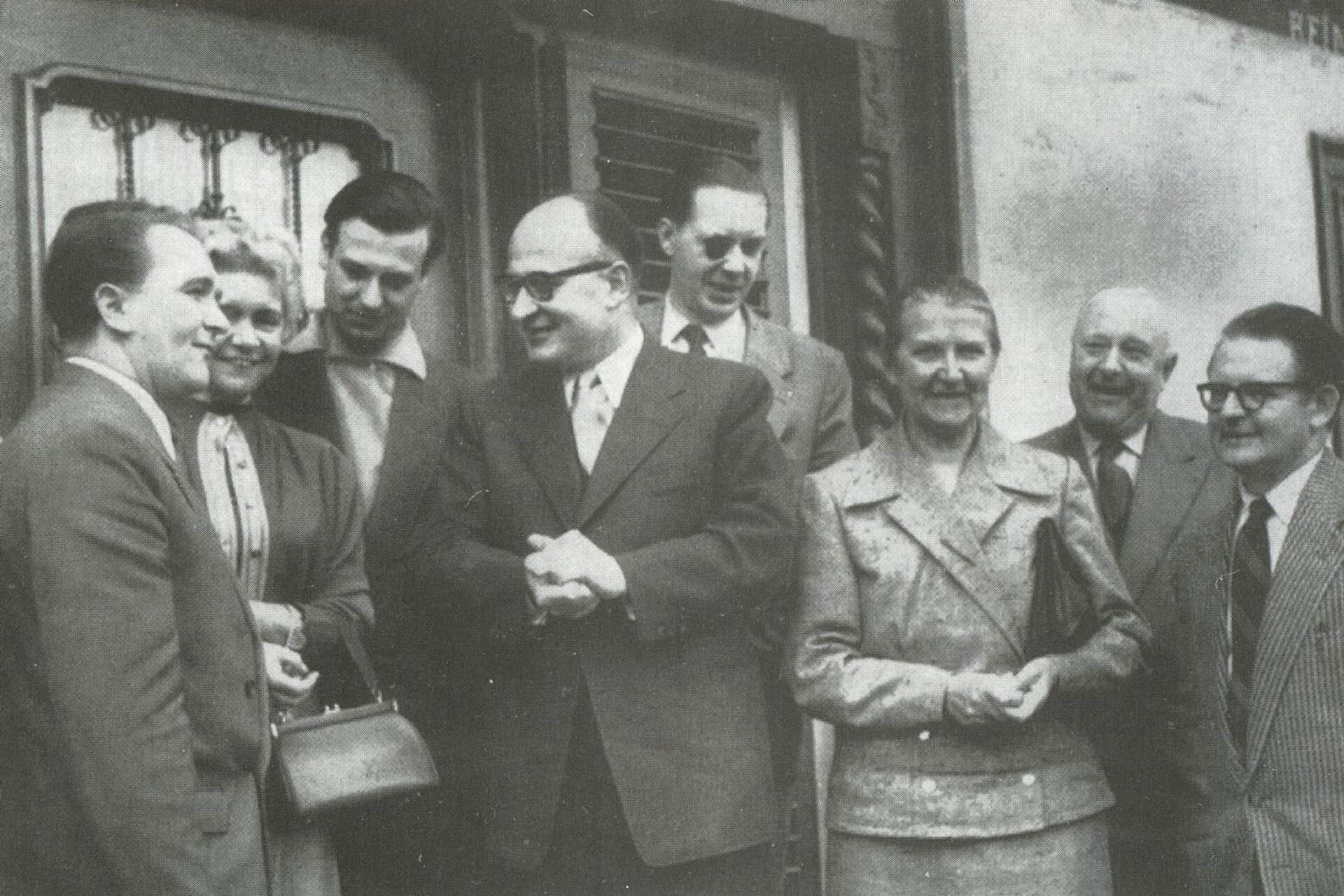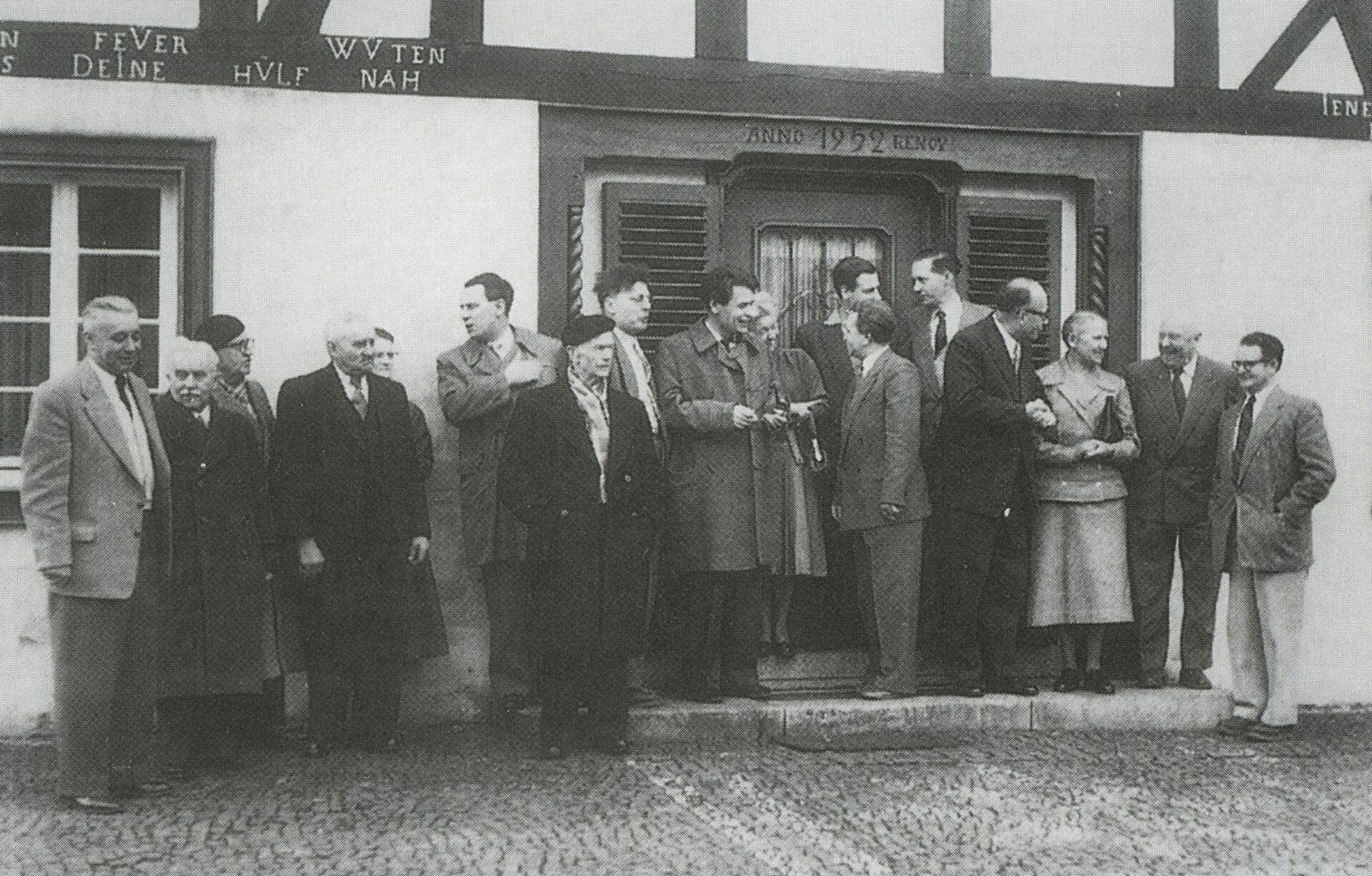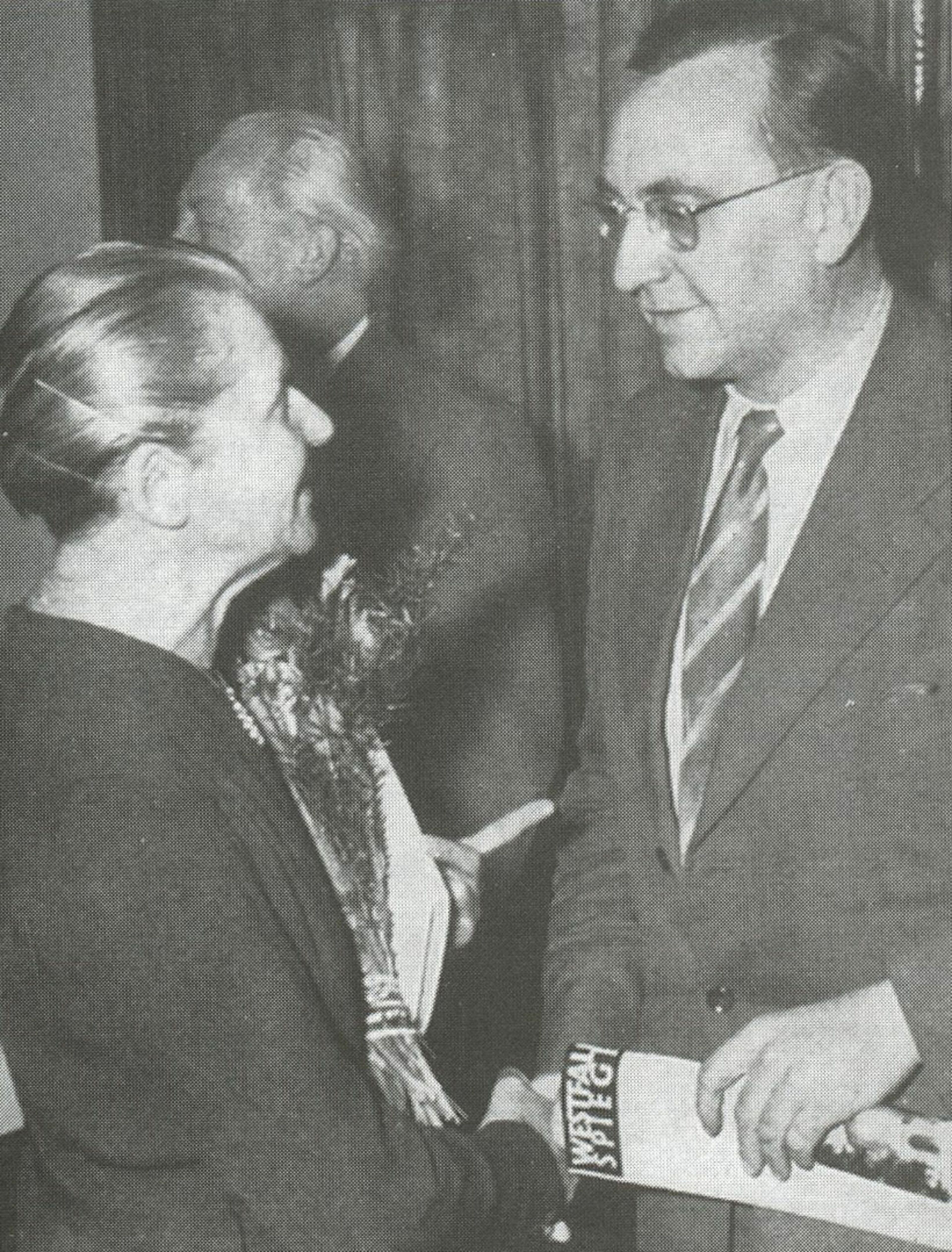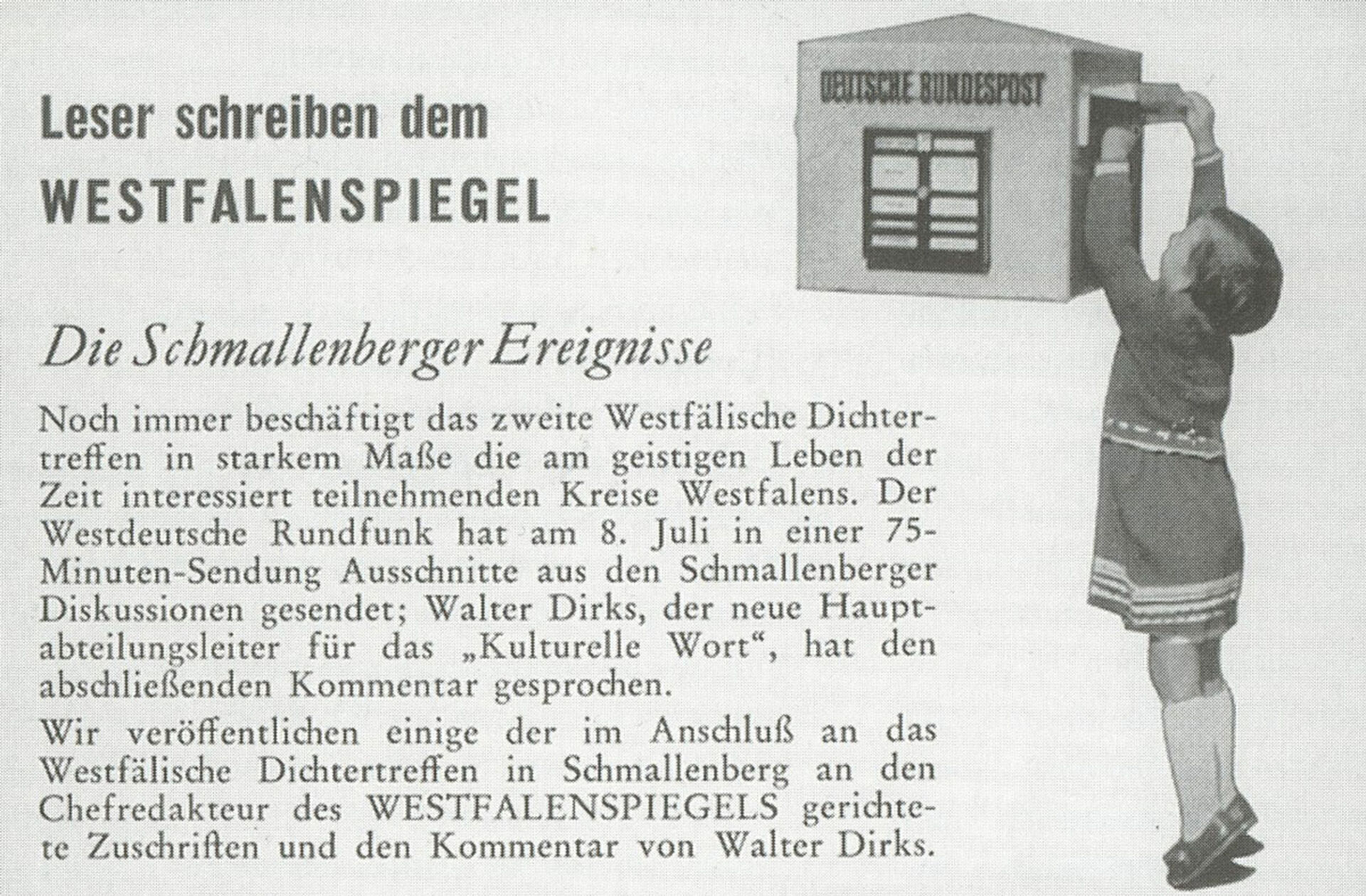History column at Paul FALKE Platz
Important events in the city's history
Information point:
History column
The half-relief depicts important events in the town's history. The bottom row tells the story of the granting of the town charter by the Archbishop of Cologne, Konrad von Hochstadten (bottom left), the building of the town on the "Smalen Berg", the Catholic church St. Alexander (1260/1261), the granting of the right to mint coins and the processing of iron ore in iron hammers. The row above (from right to left) begins with the devastating town fire of 1822, refers to the growing knitting and hosiery industry and celebrates Schmallenberg's connection to the railroad line in 1887/88. The belief in progress of the 19th century is symbolized by the "Floigenkaspar", a Schmallenberg original named Kaspar Hamm-Jostgans, who carried out flight experiments with woven baskets on his upper arms and feathers on his clothes. The new church building of 1905 is mentioned, as well as the self-sacrificing work of the women in the rubble after the Second World War (top row left). To the right is the Protestant Christuskirche from 1952. The shooting tent and the marksman aiming at a bird represent club life. At the bottom right you can see a goat, the "cow of the little man".
The back of the history column shows a map of the town of Schmallenberg. Two parallel streets on the "Smalen Berg" (east and Weststraße), as well as the cross streets. (Also clearly visible on the fold-out part of the flyer).
The picture on the relief shows the honorary citizen of our town, Paul FALKE, who was honorary mayor for 32 years.
The sculptor Werner Klenk sees the present and future of Schmallenberg in nature, forestry and tourism geared towards experiencing nature.
The glass stelae by local master glazier Martin Vollmert symbolize the old town wall with their etched ashlars.
In 1953/54, the new town hall was built on Sunthelle (now Paul FALKE-Platz). Following several modernizations, the town hall now offers around 1500 seats and up to 2500 standing places for a variety of uses.
The Schmallenberg Poetry Controversy of 1956
'Blood & soil seal' no longer works
Information point:
- Stadthalle
The Stadthalle as a venue for events
Planning for the construction of a Stadthalle began in 1952. The Dortmund architect and builder of the Westfalenhalle Horst Retzki won the tender. He took over the planning; the town hall was built in 1953/54. In the fall of 1954, the first national shooting festival of the Sauerländer Schützenbund with around 7,000 marksmen took place in the Stadthalle. However, the town hall also served cultural purposes: in 1956 it was the venue for the second Westphalian Poets' Meeting after 1945. To the surprise of the organizers, a veritable dispute arose during the poets' meeting, which went down in Westphalia's literary history as the Schmallenberg Poets' Dispute.
"Hunger for spiritual things" after 1945 in Schmallenberg
The town Schmallenberg had applied to host the poets' meeting organized by the Landschaftsverband Westfalen-Lippe because it now had a suitable venue in the form of the Stadthalle. The lively activities of the "Cultural Association" of Schmallenberg citizens, which had been extremely active since autumn 1945 and organized concerts, plays and readings, thus trying to satisfy the "hunger for spiritual things" after the war, as mentioned in a council meeting in 1945, will also have been important. From 1950, the board of the "Cultural Association" included businessman Albert FALKE as chairman and district director Siebenkötter as secretary.
The town was awarded the contract to host the poets' meeting and, at the invitation of the regional association Westfalen-Lippe, authors, literary critics and literary scholars met in the Schmallenberg town hall from April 17 to 20, 1956. Among them were all living winners of the Westphalian Literature Prize, which had been awarded since 1934 - including those who had been honored by the National Socialist regime before 1945.
The circle was expanded to include a number of young writers such as Ernst Meister and Friedrich Wilhelm Hymmen.The participating authors were Josefa Berens-Totenohl, Friedrich Wilhelm Hymmen, Jānis Jaunsudrabiņš, Maria Kahle, Heinrich Luhmann, Ernst Meister, Paul Schallück, Hans-Dieter Schwarze, Erwin Sylvanus, Hertha Trappe, Walter Vollmer, Werner Warsinsky and Josef Winckler. The meeting was chaired by Clemens Herbermann, head of press at the LWL and publisher of the "Westfalenspiegel". Professor Clemens Heselhaus, who teaches German studies in Münster, took part as an important academic authority.
What is Westphalian in literature?
The controversial, passionately debated topic was the question: "What is Westphalian in literature?" Closely linked to this question was the problematization of the works of a number of older writers and literary critics who leaned closely towards National Socialist ideas and saw themselves as decidedly Westphalian. The dispute revolved around how political literature is, can be and must be, and was also a generational conflict, as the criticism came predominantly from the ranks of younger writers.
One of the controversial authors present was Josefa Berens-Totenohl, a writer and speaker who was in great demand during the National Socialist era. In 1936, she received the Westphalian Literature Prize for her book "Der Femhof", which the Nazis awarded to authors loyal to the regime as an "instrument of cultural policy". Born in 1891 in Grevenstein near Meschede as the daughter of the village blacksmith, she grew up in very poor circumstances. As a good pupil, she was able to train as a teacher and then studied art in Düsseldorf. She Reiste to Africa, but returned in 1925 to Sauerland to Totenohl near Saalhausen returned to Totenohl. She joined the NSDAP as early as 1931. Her first novel Femhof was published in 1934 and was one of the best-selling books in the "Third Reich". The follow-up novel "Frau Magdalene" was similarly successful.
The synopsis of both novels sheds light on her ideological view of the world: the strong Wulfsbauer lives on the lonely Wulfshof, the "Femhof", with his proud daughter Madlene. The young farmer Ulrich becomes a farmhand here, as he had to leave his home because he killed a knight who violated his property and his honor. Madlene and Ulrich seem to be destined for each other because of their "innate manhood". The Wulfsbauer, however, does not tolerate this union: Ulrich is only a servant. Madlene flees with Ulrich, and the father enforces the death sentence at the Feme Court, which he personally carries out. Madlene gives birth to Ulrich's son, under whom the court flourishes. In the second volume, Madlene fights for the farm and her son; old Wulf is struck down by lightning. Madlene's strong stance makes her a role model and advisor to the women in the area. The dead Wulf becomes a legendary figure and rages like Wotan in stormy nights over the Sauerland mountains. The characters in the novels heroically face up to their fate and follow their destiny to their doom. Although the prevailing Nazi ideology is not explicitly addressed, it becomes very clear through the characters' actions in accordance with the principles of "blood" and "heritage/"soil".
Successful "blood and soil poetry"
Verena Berens-Totenohl can be described as a "blood and soil" poet who popularized National Socialist racial hygiene and racial anthropology. Her two novels are set in the Middle Ages Westfalen and are imbued with the themes of Nazi peasant ideology such as blood ties and hereditary guilt, nature and fate, race and people. In her books, people do not act individually and responsibly, but as representatives of a class, a race, as victims of their passions or as instruments of fate. Her literary imagery made unrestrained use of anti-Semitic and antiziganistic clichés.
For the National Socialists, however, her novels embodied "the young, healthy Volkstum" and nationalist sentiment, as stated in 1934 in the award citation. The awarding of the prize made the Sauerländer author famous; she subsequently gave numerous readings and lectures throughout the German Reich. She promoted "German art", railed against "Bolshevism" and incited her audience with vile anti-Semitic slogans. Her 1938 lecture "Die Frau als Schöpferin und Erhalterin des Volkstums" (Woman as Creator and Preserver of the Nation) was compulsory reading for the Nazi women's movement. The income from the books was plentiful. The poet used them to finance her own "Femhof" in Gleierbrück (between Lennestadt and Saalhausen). After 1945, her career was over. The "BluBo" (blood and soil) writer had to undergo the denazification process, but was only classified as a "follower".
With today's distance in time, it is easy to assess the quality and statements of Berens-Totenohl's novels. The participants at the 1956 meeting of poets found it more difficult. Professor Heselhaus took a clear stance even then and described the question: "What is actually Westphalian in literature?" as nonsensical. The "Westphalian" was not a value in itself, but had to prove itself through literary quality. Neither Grabbe, Freiligrath, Wilhelm Weber nor Droste had anything specifically Westphalian about them. The "Westphalian" stood for false pathos, for the spirit of blood and soil. At the same time, however, it was a fact at the time that Heimat poetry was well received by the public, who could and wanted to recognize little political message in it. Josefa Berens-Totenohl, as well as other poets with Nazi convictions and influential literary critics such as Josef Bergenthal, a former high-ranking National Socialist literary functionary, continued to be read, active and recognized.
Home poetry must also meet literary standards
The dispute therefore revolved around the literary quality of "Heimatdichtung", which had been greatly enhanced during the Nazi era by neglecting literary quality and promoting countless clichés and stereotypes that fostered the most primitive prejudices. It met with great interest: The most important regional daily newspapers, radio and television were represented at the meeting, and the people of Schmallenberg were also very interested: An author reading in the Schmallenberg town hall had more than 1,000 visitors. The result of the conflict was a medium-term reorientation in Westphalian literature. The Westphalian Heimatbund withdrew from promoting literature. From then on, "Heimatdichtung" also had to meet the aesthetic and artistic demands of good literary production without restriction. The renaming of street names in the neighboring town of Lennestadt where Josefa Berens-Totenohl had lived: on 26 February 2014, the city council decided to rename the three streets in Gleierbrück that commemorate Josefa-Berens-Totenohl and her works (Josefa-Berens-Straße, Femhofstraße, and Frau-Magdlene-Straße).
Schmallenberg remained on the literary ball: in 1993, the Society for the Promotion of Literature in the Sauerland in Schmallenberg The Christine Koch Society, which focuses on the literature of the Enlightenment, Classicism and Vormärz as well as regional literature and dialect and maintains a literary archive, was founded here in 1993. Authors such as Friedrich Albert Groeteken, Christine Koch, Hanna Rademacher, Michael Soeder and Paul Tigges lived in Schmallenberg. Today, the authors Herbert Somplatzki and Kurt Wasserfall still live here.


